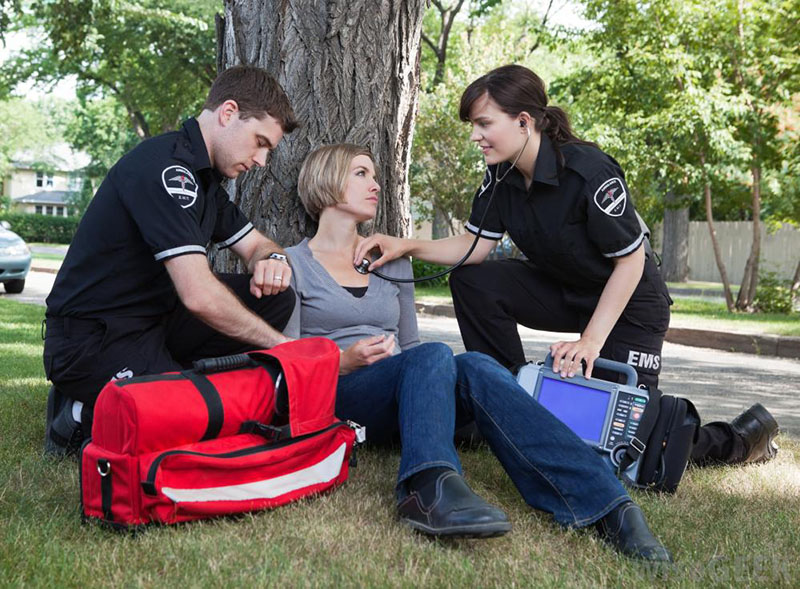The world of emergency medical services (EMS) is an important and noble career that offers a lucrative career that revolves around saving lives and providing critical care. If you’re considering becoming an Emergency Medical Technician (EMT) or even progressing into the highly sought-after role of a paramedic you’re joining a field with tremendous growth opportunities and a huge demand for highly skilled professionals. In this article, we’ll guide you through the steps to become an EMT and paramedic. We’ll also look at the many training options available and include DSHS certified EMS training course.
Understanding the function of EMTs & Paramedics
Emergency Medical Technicians are also referred to as paramedics or EMTs are the first responders in emergencies. They offer immediate assistance. They are trained to assess and take care of patients and transport them to medical facilities to receive further treatment. EMTs and paramedics play an essential part in stabilizing patients during critical moments, making split-second decisions, and delivering compassionate care in times of stress. For more information, click How to Become EMT

Step 1: Becoming EMT
You must complete the educational and training program that may differ based on what certification level you are aiming to achieve. There are three levels to EMT Certification exist:
1. EMT-Basic: This certificate is for the entry level and requires 100 to 150 training hours. EMT-Bs undergo training in basic medical procedures, such as CPR as well as bleeding management and basic airway control.
2. EMT Intermediate (EMT I): EMT I requires further training, and this can vary by state. This level can be merged with EMT B in certain states however, it could require 200-400 hours of training. It can also comprise intravenous treatment and expanded medical skills.
3. EMT Paramedic (EMT P): EMT-P is the most prestigious level of certification for EMTs. The training required to obtain this certification usually lasts from 1,000 to 1,800 hours. Paramedics have the ability to perform sophisticated medical procedures including administering medication, interpreting EKGs and advanced airway management.
Step 2: Obtaining paramedic certification
If you want to be a paramedic, you have to first go through the EMT-B or EMT-I level and acquire some hands-on experience. Following that, you’ll be able to enroll in a paramedic training program, which usually takes about one to two years to complete. Through the rigorous training, you’ll be exposed to the most advanced medical issues. You’ll also gain the skills and knowledge required to handle difficult circumstances.
Learn more about EMT Training Options
You’re able to choose among a number of options for EMT certification, based upon the level you’d like to attain. EMT training is typically provided through medical trade schools and community colleges for all certification levels. They combine the classroom with hands-on experiences in clinical and field environments.
Schools and universities provide EMT programs for the EMT/Paramedic Level, in case you’re seeking an extensive, in-depth EMT course that will lead to an education at the college level. These programs will provide you with an in-depth understanding of emergency medicine, allowing you to make better medical decisions as well as provide better care for patients.
Step 4: Make sure you have DSHS-approved EMS training
For students who are interested in becoming EMTs and paramedics, it’s important to make sure that the training course you select is DSHS approved. The Department of State Health Services (DSHS) DSHS has the authority to approve EMS Training Courses to ensure an excellent education. Enrolling in a DSHS-approved EMS training will ensure that you get top-quality training and meet the certification requirements.
Paramedics and EMTs have highly respected careers. As first responders, EMTs and paramedics play important roles in saving lives as well as providing urgent medical attention in emergency situations. To begin this life-saving mission, EMTs and Paramedics are required to complete education and training programs. Based on the level of certification required, candidates can choose from various EMT options for training, such as medical trade schools, as well as universities.
While you are considering choices for training, it is essential to make sure that the EMS training course is DSHS approved by the DSHS. This ensures that you’re getting a top-quality education that meets the requirements required for EMT certification as well as paramedic certification.
The demand for emergency medical professionals is on the rise. Being a part of the field of EMS could provide you with many career opportunities as well having the chance to make the ability to make a difference in others life. No matter whether you start out as an EMT-Basic, or you want to become a paramedic, your dedication to providing critical healthcare will be rewarded with an exciting and meaningful career in emergency medical services.